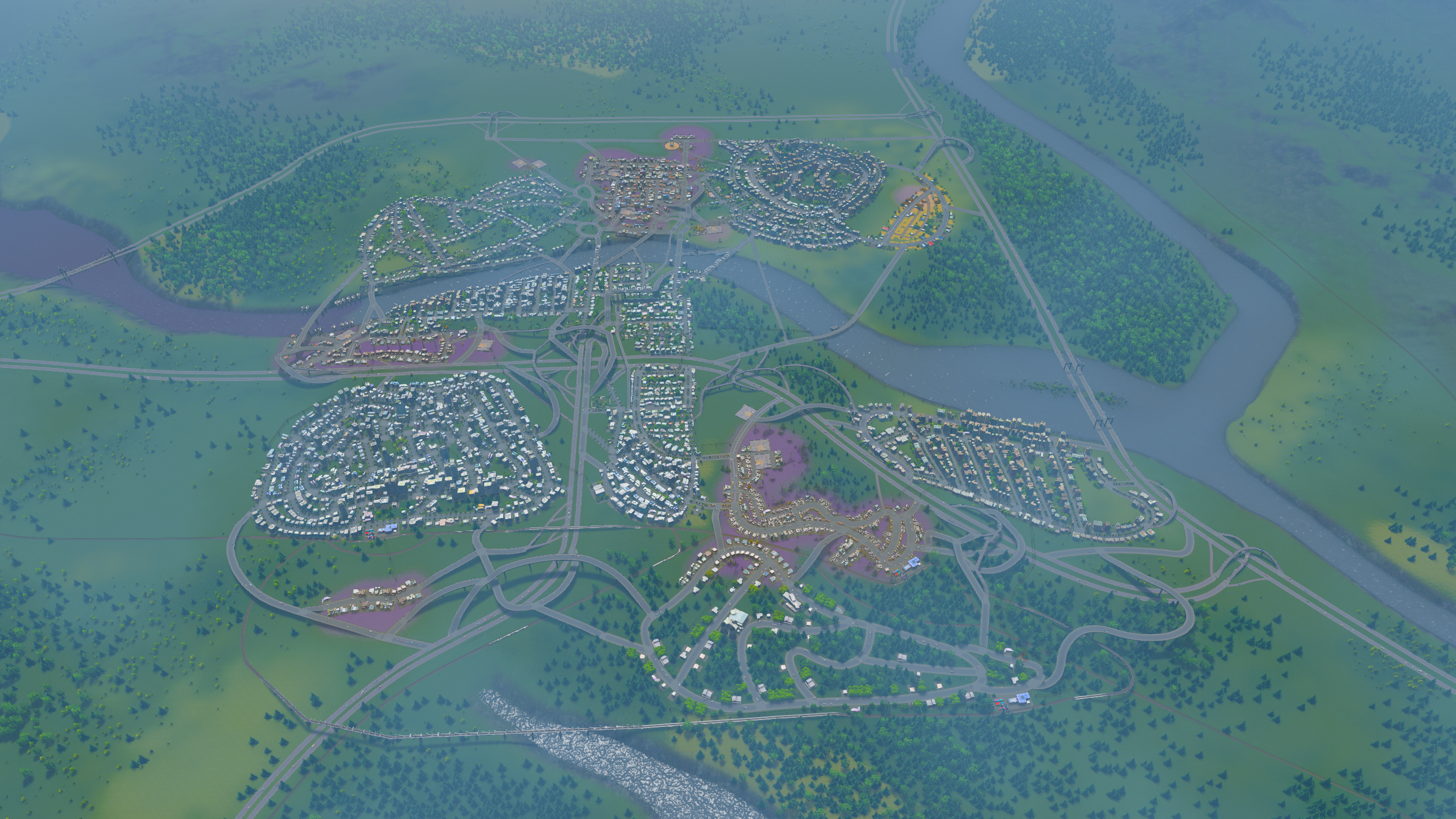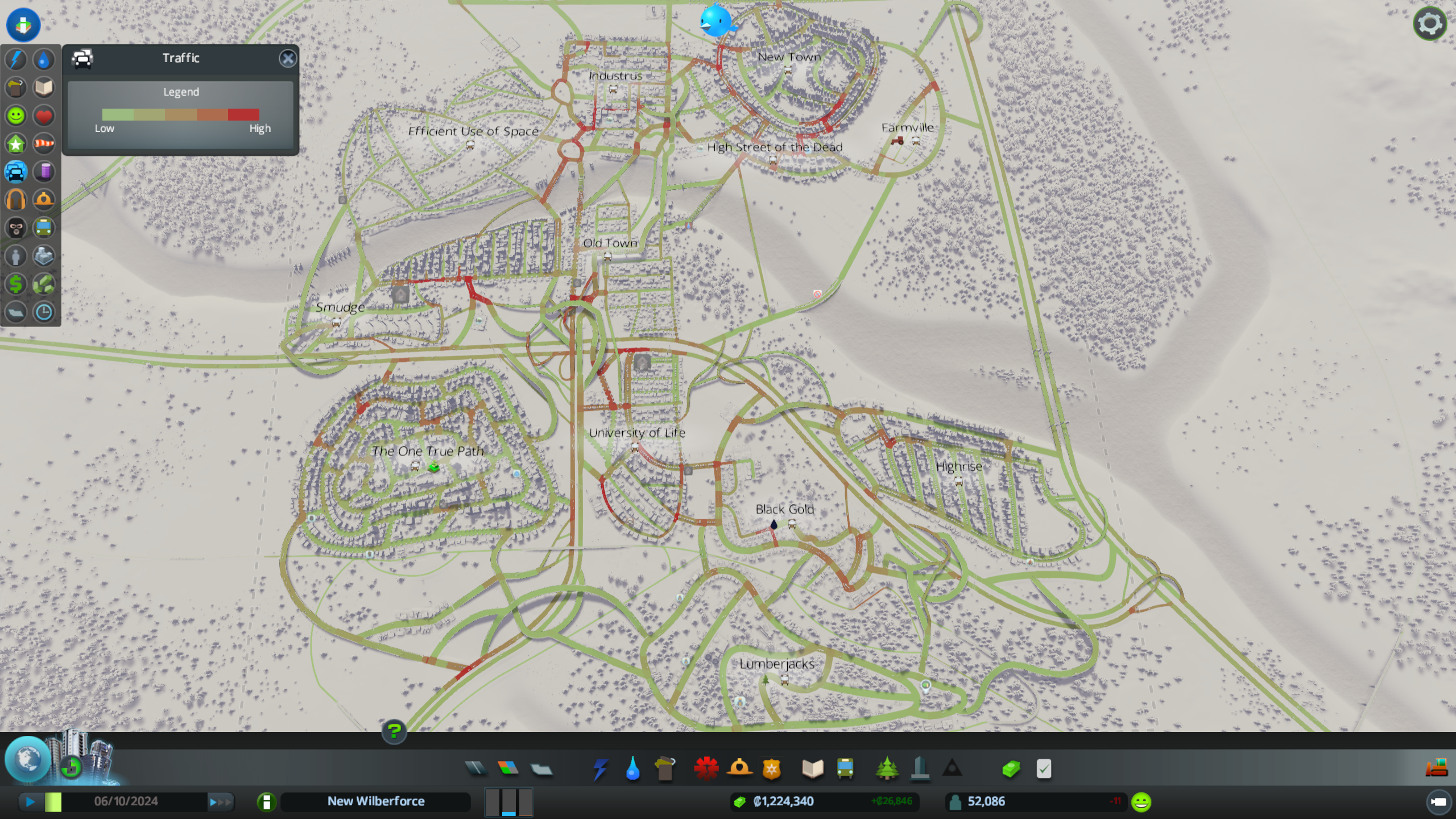First thing's first: You've gotta think about how the game understands traffic and what the logic is. Traffic light timing, turning lane distribution, merging, changing the amount of lanes all makes a huge difference. Yes, the lane path-finding is a bit funky, but think of it this way:
Vehicles like to get in a lane early on to make sure they don't have to do some crazy merging later on; make sure your busier roads' lanes all flow somewhere useful.
General road layout:
* Don't be afraid of dead ends; I see so many people obsessively join up to the next road, but it creates more intersections and means you have less space for buildings.
* Highways aren't always the answer; sometimes just deleting some of the roads joining onto a main road (or make overhead bypasses) will increase flow because there are less intersections.
* For any given area, try to keep your incoming traffic far away from your outgoing; distribute the load across different parts of the area.
* Large road (two-way) = moderate capacity at moderate speed; Highway = moderate capacity at high speed; Large road (one-way) = high capacity at moderate speed. Know which to use when.
Traffic Lights:
* For each direction that can enter a traffic light, you reduce the amount of time others have to go.
* Two one-way streets crossing is >4 times as much throughput than two two-way streets; Traffic directions not only have twice as much lane-space, but twice as much green-light time.
* T intersections have different lane configurations than Y intersections; and they have different speed limits.
* Don't be afraid of traffic lights; They are really superior when there is a higher load of traffic.
* Leave plenty of space between intersections; not enough room to filter through is probably the biggest problem I see on this subreddit.
Highways:
* Linking two off-ramps to the beginning of a non-highway piece of road causes HUGE merging issues.
* Every junction is a bad junction.
The perfect city examples:
Heavy traffic industrial area overview.
Entering/exiting the freeway.
Distributing entering/exiting traffic through the area.
Points of note:
* Incoming and outgoing traffic do not touch each other until they're fairly well dispersed.
* Incoming traffic only stops when there are 12 lanes available; and those twelve lanes of traffic lights only have one other phase in the cycle so 50% of the time you have 12 lanes of throughput onto 18 lanes. This also matches the initial merge, 12 lanes flowing 50% of the time; at 6 full time lanes, you have no bottleneck.
* Space between the initial traffic lights is very long; space is a buffer for flow interruptions.
* Having the initial traffic light at the beginning rather than two Highway pieces merging means that vehicles coming from the left, wanting to go right, don't have to merge across 3 lanes of busy traffic. When 50% of the traffic tries to merge like this, the whole thing comes to a grinding halt. Same thing on the way out.
* I split the 6 lane into two 3 lanes outbound because each lane had a place to go, and I merged 3 lanes straight onto the highway so cars wouldn't all stack up in two of the six lanes the whole way down.
* The inbound, however, I made with 1 lane mergers (to avoid merging across 3 lanes, especially if there was an issue) and dumped it straight into a 6 lane so my traffic light throughput would be as high as possible; it's OK for cars to build up and then flush out.
Tips:
* Upgrading only the piece joining the traffic light (for example, from 4 to 6 lane) is a very cheap way of dramatically bumping up traffic throughput at minimal cost.
* Don't be so quick to isolate different parts of your city with the only way through being highways; design with the aim of making it so that it's just quicker for most people to opt for the highway.
* Don't watch famous Youtubers for ideas; they all seem to be terrible at this.






